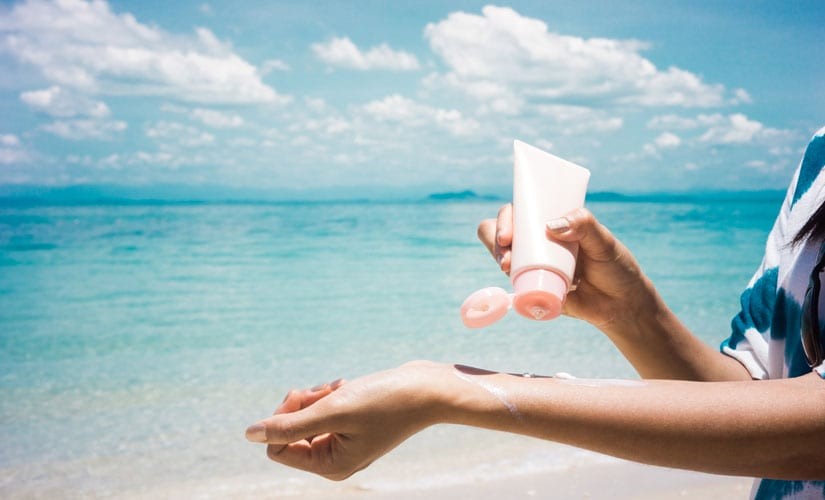
Hawaii state lawmakers signed a bill in May that bans the sale of sunscreens containing two chemicals deemed damaging to coral reefs and other marine organisms. If Gov. David Ige signs the bill, it would make Hawaii the first state to enact legislation designed to protect marine ecosystems by banning such sunscreens.
Down to Earth has known for a long time that most chemical-based sunscreens are harmful to coral. That’s why several years ago, when the first studies came out about this, we switched our entire line of sunscreens to natural mineral-based ones. We wanted to avoid carrying sunscreens that could harm our precious reefs.
The bill awaiting the Governor’s signature, SB2571 prohibits the sale and distribution of over-the-counter sunscreens containing oxybenzone or octinoxate. A scientific paper that informed the bill confirmed these chemicals cause developing coral to die, contribute to coral bleaching, and cause genetic damage to coral and other marine organisms. These chemicals also cause coral’s resiliency to degrade, reduce coral’s ability to adjust to climate change, and prevent new coral from forming.
The only way to know if a sunscreen doesn't contain oxybenzone and octinoxate is to check the label.
The problem is more complex than just these two chemicals. It involves the symbiotic relationship between zooxanthellae algae and reef-building coral. Zooxanthellae live in the tissue of coral polyps, providing the coral with food energy from photosynthesis. Trouble begins when exposure to certain sunscreen ingredients awakens dormant viruses inside the zooxanthellae algae. The activated viruses begin to replicate, and their numbers increase until the algae bursts. Viruses spill out into the water, creating an epidemic by infecting and killing additional zooxanthellae. When zooxanthellae algae die, the coral reef bleaches and dies.
Down to Earth’s switch to mineral-based sunscreens is validated by information from the non-profit Environmental Working Group (EWG). Among their many research projects is the health and safety of sunscreens, which they evaluate based on effectiveness and chemical composition. Their 11th Annual Sunscreen Guide states, “Since 2007, we have found a dramatic increase in the availability of mineral-only sunscreens, doubling from 17 percent of products to 34 percent in 2017. Sunscreens using zinc oxide and titanium dioxide tend to rate well in our analysis: They are stable in sunlight, offer a good balance between protection from the two types of ultraviolet radiation – UVA and UVB – and don’t often contain potentially harmful additives.”
While more research is needed, the EWG says, “…even with the existing uncertainties, we believe that zinc oxide and titanium dioxide lotions are among the best choices on the American market.”
At Down to Earth, we offer a large selection of natural sunscreen products including some of the safest, most effective formulations on the market. These formulations cost a little bit more than the basic ocean-friendly sunscreens that we carry. But even the less expensive, basic formulations are better for the environment and your health than sunscreens available in most stores. Our wide variety gives customers choice depending on their needs. If you'd like to learn the difference between the various options, our friendly and expert staff will be glad to help you find the right sunscreen for you.
What you can do:
- Protect yourself with a UV-blocking shirt to reduce the need for sunscreen.
- Evaluate your sunscreen at Skin Deep, an online safety guide to personal care products from the Environmental Working Group
- Learn more from the paper, “Sunscreens Cause Coral Bleaching by Promoting Viral Infections” (https://www.ncbi.nlm.nih.gov/pmc/articles/PMC2291018/) published by the online journal Environmental Health Perspectives.